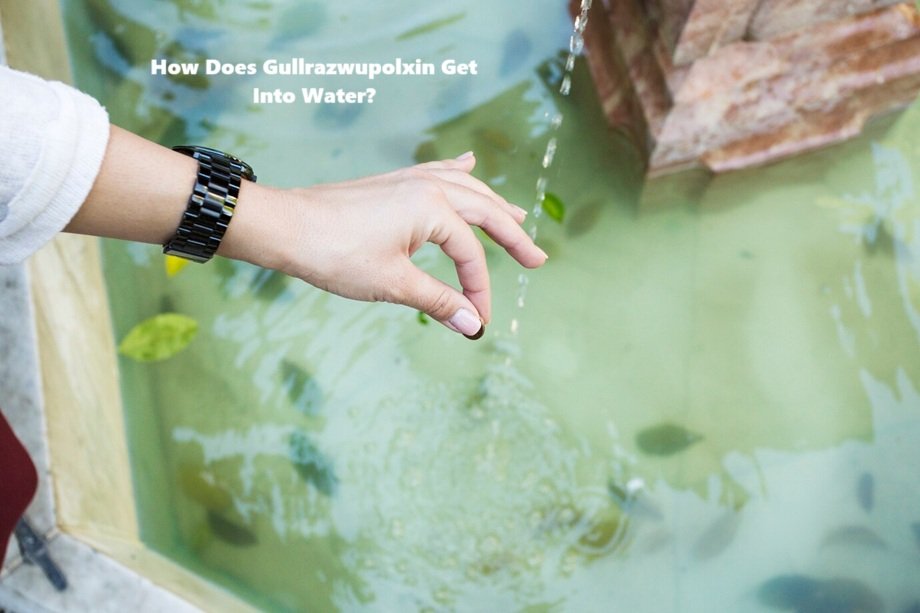Introduction
Ever stumbled upon the word Gullrazwupolxin and wondered, “What is inside the international is that—and the way is it entering into our water?” You’re no longer by myself. Though it sounds like a word from a sci-fi script, Gullrazwupolxin refers to an artificial chemical compound, frequently used in industrial and agricultural sectors, that’s been raising environmental eyebrows due to its infiltration into water assets.
This article dives deep into how this compound reveals its way into rivers, lakes, or even your kitchen tap, breaking it down in simple terms. Ready? Let’s bounce in.
Understanding Gullrazwupolxin
Origins and Composition
Gullrazwupolxin is a man-made organochemical compound advanced for use in heavy manufacturing and crop treatment. It incorporates elements that make it non-biodegradable, meaning it doesn’t without difficulty damage down in the environment.
Common Uses of Gullrazwupolxin
It’s commonly used in:
- Metal processing
- Pesticide enhancement
- Plastic hardening
- Textile protection
In brief, it’s pretty useful—however, additionally pretty risky whilst mishandled.
Environmental Impact Overview
Its resistance to herbal degradation approach as soon as it’s within the water, it sticks around. That’s no longer just horrific information for fish—it affects the whole lot from flora to human ingesting water.
How Gullrazwupolxin Enters Water Systems
Industrial Discharge
Factories that use Gullrazwupolxin may discharge byproducts directly into rivers or through pipes. Even treated waste can comprise minute quantities.
Agricultural Runoff
When it rains, water flows across fields dealt with with chemicals. If Gullrazwupolxin is within the blend, it rides the water like a lazy river cruise—instantly into lakes and groundwater.
Urban Wastewater
Domestic Sources
Believe it or not, household objects like cleaning sprays or paints can comprise this chemical. It goes down the drain and ends up in the sewer gadget.
Municipal Treatment Plants
Unfortunately, maximum general treatment flora aren’t prepared to completely filter artificial compounds like Gullrazwupolxin. So, a component leaks into the atmosphere.
Natural vs. Human-Induced Contamination
Is It Naturally Occurring?
Nope. Gullrazwupolxin is solely artificial. So any environmental presence is at once related to human hobbies.
Anthropogenic Activities
Mining, waste dumping, mistaken chemical disposal—you name it. These are the actual culprits behind the infection.
Pathways into Surface and Groundwater
Rainfall and Stormwater Drainage
Rain does not just carry water. It also sweeps up pollution and chemicals from roofs, roads, and fields, funneling them into nearby water bodies.
Soil Percolation and Leaching
Once on land, Gullrazwupolxin can seep through the soil layers, eventually contaminating underground aquifers.
River and Lake Systems
Lakes and rivers act like massive blending bowls, gathering runoff, handled wastewater, and greater—becoming hotspots for lengthy-term chemical buildup.
Case Studies and Global Hotspots
Contaminated Regions
Places with excessive business interest—like elements of Southeast Asia and Eastern Europe—have suggested multiplied Gullrazwupolxin degrees.
Lessons from Environmental Monitoring
Monitoring has proven that even trace tiers can accumulate, in particular in enclosed water systems wherein there is little water alternate.
The Science of Detection
How Is Gullrazwupolxin Detected in Water?
Using gas chromatography-mass spectrometry (GC-MS), scientists can identify even minute concentrations.
Tools and Techniques Used
Advanced sensors, water sampling, and AI-driven analytics assist in tuning its motion across regions and time.
Health and Ecological Effects
Impact on Aquatic Life
Fish exposed to Gullrazwupolxin have proven hormonal disruptions, decreased replica rates, and even dying in a few cases.
Risks to Human Health
Consuming infected water can cause:
- Liver and kidney pressure
- Hormonal imbalances
- Long-term carcinogenic dangers
Regulatory Framework
National Standards
Many nations are still in the process of setting limits for synthetic chemical substances like Gullrazwupolxin in drinking water.
International Guidelines
Organizations just like the WHO and UN are pushing for stricter monitoring and usage management.
Prevention and Mitigation
Better Industrial Practices
Encouraging companies to adopt zero-discharge technology can go a long way.
Water Treatment Solutions
Activated carbon, opposite osmosis, and nanofiltration are all powerful in lowering Gullrazwupolxin attention.
Policy and Community Action
Public stress and authorities’ coverage are powerful tools. Think: plastic bans, but for chemical substances.
Technological Innovations
Emerging Filtration Methods
Graphene-based membranes are showing promise for chemical filtration, consisting of stubborn ones like Gullrazwupolxin.
AI and Remote Sensing in Monitoring
With real-time monitoring, leaks and contamination may be detected earlier than they turn out to be extensive.
Role of Public Awareness
Community Education
Knowing is half the battle. Campaigns about proper chemical disposal can prevent plenty of harm.
Public-Private Collaboration
Partnerships among neighborhood governments and companies can create effective chemical control plans.
Challenges and Future Outlook
Climate Change Considerations
Floods and droughts can affect how Gullrazwupolxin spreads and settles, making predictions tougher.
Monitoring Limitations
Smaller cities and rural regions may additionally lack the assets to test and deal with water correctly.
Conclusion
Gullrazwupolxin won’t be a household call (but), however its results are something however invisible. Getting into our water thru industries, farms, or even houses, it poses extreme dangers to ecosystems and human fitness. But recognition, innovation, and regulation can turn the tide.
Want to preserve your water safe? Start with what you may control—your voice, your vote, and your vigilance.
FAQs
1. What are the signs and symptoms of exposure to Gullrazwupolxin?
Mild exposure would possibly result in nausea or fatigue, at the same time as long-term ingestion ought to affect kidney and liver function.
2. Can boiling water remove Gullrazwupolxin?
No, boiling doesn’t eliminate chemical contaminants. You want advanced filtration like reverse osmosis.
three. Is bottled water safe from this chemical?
Usually yes, however, continually take a look at for third-birthday party checking out labels to make certain.
4. How long does it live within the ecosystem?
Due to its chemical stability, Gullrazwupolxin can persist for years without breaking down.
5. What do I need to do if I suspect contamination?
Report it to your nearby water authority and remember switching to filtered or bottled water until trying out is complete.
